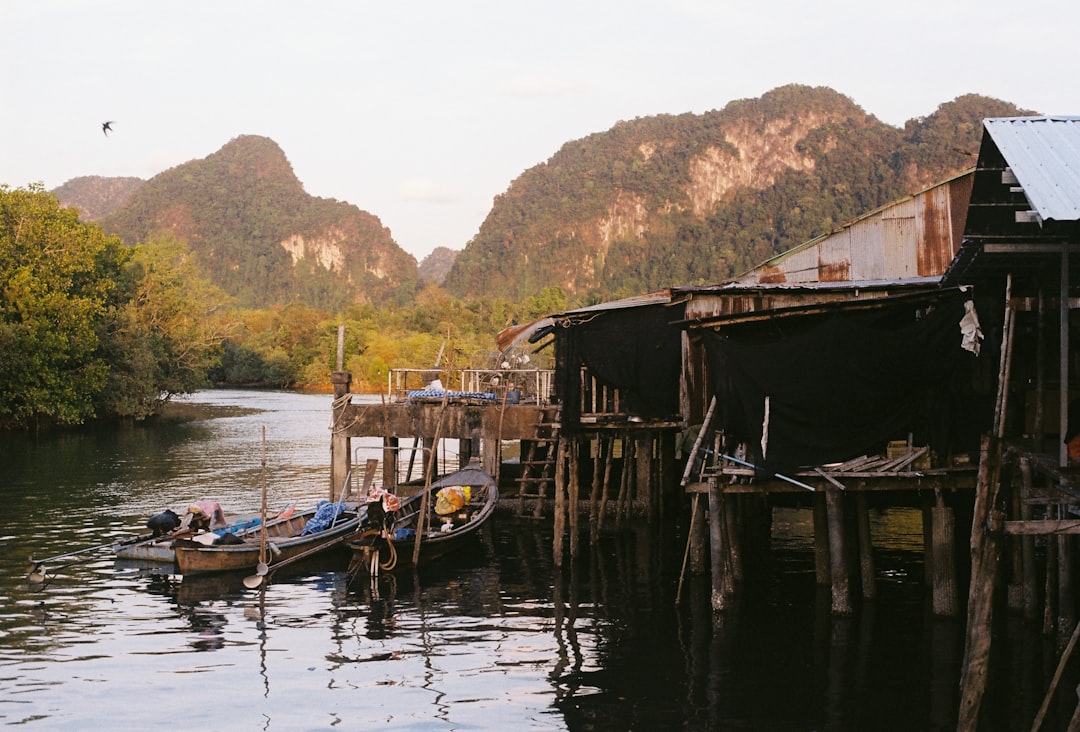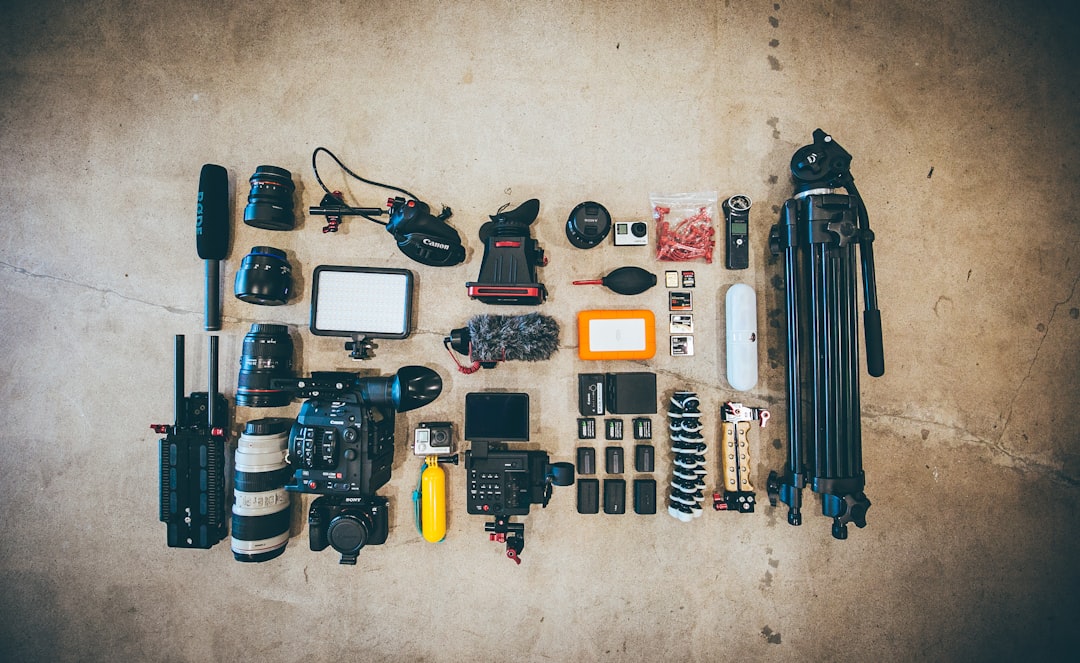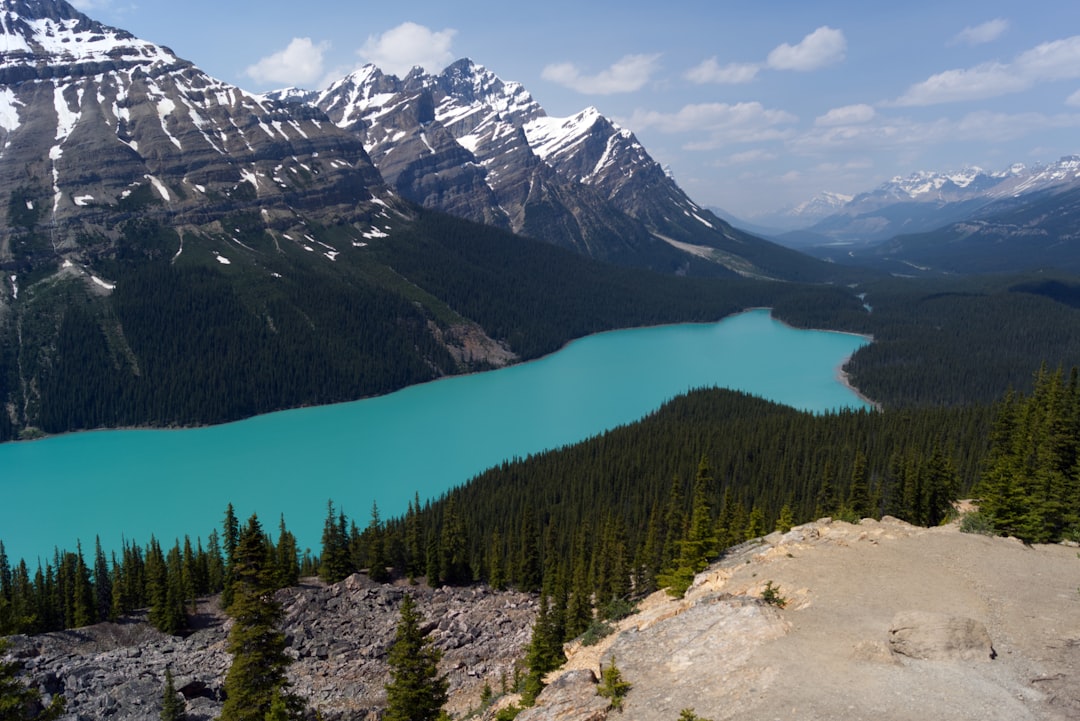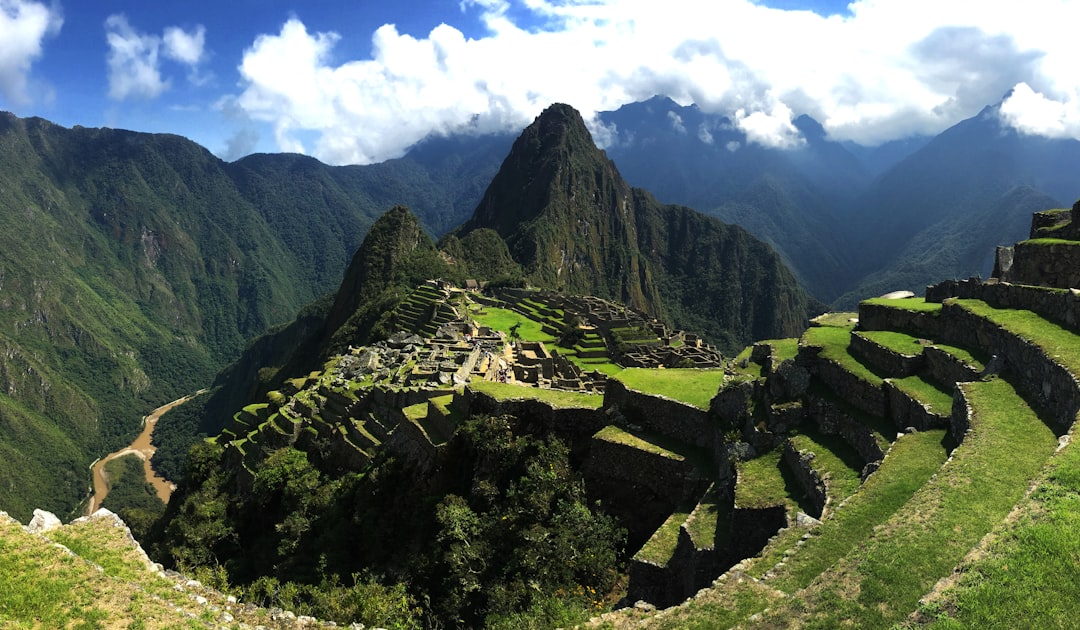Mastering the Art of Travel Photography: A Comprehensive Guide
A comprehensive guide on planning a successful travel photography expedition, including tips on researching destinations, timing and lighting considerations, packing the right equipment, planning shots, safety measures, capturing urban and natural landscapes, post-expedition processing and sharing, avoiding common mistakes, and utilizing photography guides for better planning.
Introduction to Planning a Successful Travel Photography Expedition
Embarking on a successful travel photography expedition necessitates a thorough understanding of the best ways to plan for capturing extraordinary images in diverse locations. Noteworthy platforms like Pinterest, Instagram, and Google Images serve as valuable resources for photographers to kickstart their research and gain initial inspiration for potential photography destinations. For instance, a travel photographer planning an expedition to Machu Picchu may utilize these platforms to discover unique vantage points and perspectives shared by other photographers, offering a glimpse into the visual storytelling possibilities at the chosen location.
Furthermore, the utilization of Google Earth provides photographers with a bird’s eye view of the terrain, enabling them to plan their shots meticulously and uncover hidden gems that might escape a cursory glance. For instance, exploring the intricate layout of Machu Picchu through Google Earth may reveal specific angles or viewpoints that showcase the ancient ruins in a new light, enriching the photographer’s vision for the expedition. By investing time in comprehensive location research, photographers can unveil captivating perspectives and refine their shot list to encapsulate the essence of each destination creatively.
When it comes to planning a successful travel photography expedition, the key lies in meticulous preparation and strategic organization. By understanding where, when, and how to take the best pictures, photographers set themselves up for a fulfilling and productive journey filled with stunning visual storytelling opportunities. Leveraging tools like Google Maps’ street view feature allows for effective planning of photo locations and perspectives, enhancing the overall quality of the expedition. This emphasis on planning and organization forms the foundation for a successful travel photography experience, guiding photographers towards capturing memorable moments and creating compelling narratives through their images.
Researching and Choosing Destinations
When preparing for a travel photography expedition, conducting thorough research to select the right destinations is crucial for a successful trip. Platforms such as Pinterest, Instagram, and Google Images offer a wealth of visual inspiration to kickstart your planning process. For instance, if you are planning a trip to Machu Picchu, browsing through images on these platforms can provide insights into popular vantage points and unique angles that photographers have captured in the past.
Moreover, leveraging tools like Google Earth can offer a bird’s eye view of the landscape, enabling you to scout potential locations and map out your shots effectively. For example, zooming in on Machu Picchu using Google Earth allows you to visualize the terrain, nearby landmarks, and possible viewpoints, aiding in pre-visualizing your photography compositions. By delving into detailed location research, photographers can uncover hidden gems off the beaten path and discover lesser-known spots that offer a fresh perspective for their expedition. This meticulous approach not only enhances the overall photography experience but also leads to capturing unique and captivating images that stand out from the ordinary travel snapshots.
In addition to online platforms, photography guides and resources can be invaluable in researching and selecting destinations for a travel photography expedition. Websites like Photography Guides offer comprehensive information on photography spots worldwide, including popular destinations like Maine, Lake Tahoe, and Monument Valley National Park. By exploring these guides, photographers can gain insights into the best photography locations, recommended shooting times, and unique perspectives that can elevate their images. For example, a photographer planning to visit Maine can use these guides to discover hidden gems along the coastline or picturesque lighthouses that offer stunning photographic opportunities. Incorporating these resources into the research process enhances the depth and breadth of destination choices, ensuring a rich and diverse photography experience.
Timing and Lighting Considerations
When planning a travel photography expedition, understanding the significance of timing and lighting can make a substantial difference in the outcome of your photos. In addition to considering factors like lighting conditions, direction, and lens requirements, it’s essential to leverage the natural light available during the golden hours. For instance, capturing images during sunrise or sunset can provide a soft, warm glow that adds depth and drama to your photographs.
Moreover, the careful consideration of lighting conditions allows photographers to create visually stunning compositions that evoke emotions and tell compelling stories through their images. By aligning the expedition schedule with optimal lighting scenarios, photographers can maximize the impact of their shots and elevate the overall quality of their work. This thoughtful approach not only enhances the aesthetics of the photographs but also underscores the importance of meticulous planning in travel photography expeditions.
In addition to the golden hours, understanding the concept of blue hour can further enhance the quality of travel photographs. The blue hour refers to the period shortly before sunrise and after sunset when the sky takes on a deep blue hue, creating a magical and ethereal atmosphere for photography. By incorporating the blue hour into the expedition schedule, photographers can capture unique and captivating images with a serene and enchanting ambiance. For example, photographing a cityscape during the blue hour can result in stunning images with a harmonious balance of natural and artificial light, adding a touch of mystery and allure to the composition. By recognizing the nuances of different lighting conditions, photographers can elevate their images and create visually striking photographs that leave a lasting impression on viewers.
 Packing the Right Equipment
Packing the Right Equipment
When preparing for a travel photography expedition, selecting the right camera gear plays a vital role in the success of the trip. It is crucial to consider various factors such as the duration of the journey, the expected weather conditions, and the specific photographic needs of the destinations. For instance, if you are planning to explore a diverse range of landscapes from rugged mountains to serene beaches, packing a selection of lenses ranging from wide-angle to telephoto can help you capture each scene optimally.
Additionally, including essential items like a sturdy tripod can significantly enhance the quality of your shots, especially in low light conditions or when shooting long exposures. Filters are another valuable addition to your gear list, allowing you to experiment with creative effects such as polarizers for reducing glare or neutral density filters for long exposures in bright environments. Moreover, packing extra batteries is a practical approach to ensure that you never miss a shot due to power constraints, particularly in remote locations where charging facilities may be limited.
While it may be tempting to bring along every piece of camera equipment you own, overpacking should be avoided at all costs. Carrying excessive gear can not only hinder your mobility but also lead to unnecessary fatigue, impacting your ability to focus on composing and capturing compelling images during the expedition. By carefully selecting the essential items that cater to your specific photography needs, you can streamline your equipment, making it easier to move between locations and seize photographic opportunities efficiently.
In addition to camera gear, other essential items to consider packing for a travel photography expedition include protective cases or bags to safeguard your equipment during transportation and inclement weather conditions. Investing in quality gear protection ensures that your cameras, lenses, and accessories remain safe and secure throughout the journey, minimizing the risk of damage or malfunctions. Moreover, packing cleaning supplies such as lens wipes, a blower, and a microfiber cloth is essential for maintaining the cleanliness and performance of your gear on the go. By incorporating these gear protection and maintenance practices into your packing routine, you can prolong the lifespan of your equipment and ensure optimal functionality for capturing memorable images during the expedition.
Planning Your Shots
When preparing for a travel photography expedition, utilizing photo planning apps such as Photographer’s Ephemeris and PhotoPills can significantly aid in visualizing and organizing shot ideas before embarking on your journey. For instance, Photographer’s Ephemeris helps you determine the position of the sun and moon at any given time and location, enabling you to plan your shots based on the best lighting conditions. On the other hand, PhotoPills allows you to explore sun, moon, and Milky Way information, aiding in precise planning for astrophotography shots during your expedition.
Moreover, the art of successful travel photography lies in finding the right balance between detailed planning and spontaneous creativity while on the field. For example, having a well-thought-out shot list based on research and location scouting provides a solid foundation for your photography expedition. Still, remaining open to unexpected opportunities and adapting to changing conditions allows you to capture unique moments that may not have been part of the initial plan. By striking this balance between meticulous planning and on-the-spot creativity, you not only ensure that you cover essential shots but also have the flexibility to explore new perspectives and create captivating images that truly tell the story of your travel experiences.
Incorporating photo planning apps into your workflow can revolutionize the way you approach shot organization and visualization during a travel photography expedition. For instance, utilizing augmented reality features in apps like PhotoPills allows you to overlay the sun, moon, or stars’ positions on the live camera view of your smartphone, facilitating precise composition and framing of shots. By leveraging these advanced tools, photographers can plan intricate compositions, including celestial bodies or natural elements, with accuracy and creativity, resulting in visually striking and technically precise photographs. Additionally, the ability to save and share location-specific plans or shot ideas within these apps fosters collaboration and inspiration among photographers, enhancing the overall experience of planning and executing a travel photography expedition.
 Safety Measures for Gear and Health
Safety Measures for Gear and Health
When embarking on a travel photography expedition, safeguarding your photography gear is paramount to ensure a smooth and successful trip. One effective measure is registering your equipment before the journey begins. For instance, by registering your camera, lenses, and other gear, you create a record that can aid in tracking and recovering the items in the unfortunate event of loss or theft. This proactive step provides peace of mind and a potential solution to mitigate the impact of such incidents on your expedition.
In addition to equipment registration, maintaining the cleanliness and functionality of your camera gear is crucial for optimal performance throughout the expedition. Regularly cleaning your camera equipment, including lenses, sensors, and other accessories, helps to prevent dust accumulation, smudges, or debris that could affect the quality of your photographs. By incorporating equipment maintenance into your routine during the trip, you ensure that your gear operates at its best, allowing you to capture stunning images without any technical hindrances.
Furthermore, beyond the gear itself, prioritizing personal health and safety while traveling for photography is fundamental. Whether navigating rugged terrains, exploring bustling urban areas, or trekking through remote landscapes, taking care of your well-being is essential for an enjoyable and successful photography experience. This includes staying hydrated, getting adequate rest, and being mindful of your surroundings to prevent any accidents or health concerns that could disrupt your expedition. By integrating safety measures for both your equipment and yourself, you can focus on your creative pursuits and immerse yourself fully in the photography journey.
Traveling with photography gear requires careful consideration of security measures to protect your valuable equipment from theft or damage. Before embarking on an expedition, it is advisable to invest in secure camera bags or backpacks with anti-theft features such as lockable zippers or slash-proof materials. Additionally, utilizing gear insurance or equipment protection plans can provide financial coverage in case of accidents, theft, or unforeseen circumstances during the journey. By taking proactive steps to secure your photography gear and mitigate potential risks, you can enjoy peace of mind and focus on capturing stunning images without worrying about the safety of your equipment.
Capturing the Essence of Urban and Natural Landscapes
When delving into urban photography, it’s essential to focus on capturing the distinctive elements that define a city’s character. This includes photographing iconic landmarks, bustling street scenes, and the daily life of its residents. For example, when photographing New York City, one might aim to showcase the contrast between the historic architecture of buildings like the Empire State Building and the modern vibrancy of Times Square, capturing the essence of the city that never sleeps.
On the other hand, natural landscape photography involves immersing oneself in the breathtaking beauty of natural environments and capturing the raw emotions they evoke. For instance, when photographing the serene landscapes of Banff National Park in Canada, one could emphasize the majestic peaks of the Rocky Mountains, the crystal-clear waters of Moraine Lake reflecting the surrounding forests, and the tranquility of the wilderness. Each shot should aim to convey the grandeur and emotional resonance of the location, allowing viewers to connect with the scene on a deeper level.
To excel in capturing urban and natural landscapes, photographers must develop a keen eye for detail to notice unique compositions and perspectives that others may overlook. Patience is also key, as waiting for the perfect lighting conditions or the right moment to capture a decisive shot can make a significant difference in the final image. Additionally, understanding how light interacts with the environment and mastering composition techniques such as leading lines and the rule of thirds will elevate the quality of urban and natural landscape photographs, creating captivating visual stories that resonate with viewers.
Incorporating storytelling elements into urban and natural landscape photography can transform ordinary images into compelling visual narratives that evoke emotions and intrigue viewers. For example, capturing the juxtaposition of nature and urban development in a single frame can convey a powerful message about environmental conservation or the harmonious coexistence of man and nature. By infusing your photographs with storytelling themes, you create a deeper connection with your audience, inviting them to explore the layers of meaning within each image. Additionally, experimenting with different perspectives, angles, and compositions allows photographers to convey unique narratives and perspectives, adding depth and richness to their visual storytelling approach.
Post-Expedition: Processing and Sharing
After the exhilarating travel photography expedition, the journey continues with the essential steps of processing and sharing your captured images to immortalize the moments you’ve experienced. Processing images promptly post-expedition is key to maintaining the authenticity and vibrancy of the scenes you’ve witnessed, ensuring that the emotions and details are accurately preserved. For instance, using editing software like Adobe Lightroom or Capture One can enhance colors, adjust lighting, and bring out the best in your photographs, elevating them to their full potential.
Moreover, sharing your travel photographs on various social media platforms not only allows you to showcase your work but also enables you to engage with a wider audience and receive valuable feedback on your photography. Whether it’s Instagram, Facebook, or photography-specific platforms like 500px or Flickr, sharing your visual stories can create connections, inspire others, and even open up opportunities for collaboration or exposure. By actively participating in the vibrant online photography community, you can gain insights, learn from fellow photographers, and expand your reach as an artist, enriching your overall photography experience.
Building a personal photography portfolio or website is another effective way to showcase your travel photography work professionally and reach a broader audience of art enthusiasts and potential clients. Websites like Photography Guides provide a platform for photographers to create online portfolios, share their work, and connect with like-minded individuals in the photography community. By curating a collection of your best images and presenting them in a visually appealing and cohesive manner, you can attract viewers, collaborators, and opportunities to showcase your talent and expertise in travel photography. Additionally, actively engaging with photography platforms and competitions can further elevate your online presence and visibility, opening doors to new collaborations, exhibitions, and professional growth in the photography industry.
Travel Photography Expedition Mistakes to Avoid
When planning a travel photography expedition, it’s essential to be mindful of common mistakes that can hinder the success of your trip. One such mistake is overlooking safety precautions for both your photography gear and personal well-being. Failing to register your gear before the journey can make it challenging to track and recover in case of loss or theft, potentially jeopardizing your entire expedition. Additionally, neglecting personal safety measures during the trip, such as staying hydrated, getting adequate rest, and being aware of your surroundings, can impact your overall experience and creativity.
Another crucial aspect to consider is finding the right balance between detailed planning and flexibility throughout the expedition. While meticulous planning is vital for identifying key locations, timing, and shots, being too rigid in your schedule can limit your ability to adapt to unexpected opportunities or changing weather conditions. By allowing room for spontaneity and flexibility in your itinerary, you can capitalize on unique moments and lighting conditions that may present themselves during the journey, ultimately enhancing the quality and diversity of your photography.
Moreover, be cautious not to overpack your camera gear for the expedition. Carrying excessive equipment can not only weigh you down but also lead to unnecessary fatigue and inconvenience, hindering your mobility and creativity during the trip. Instead, carefully consider the essential items you’ll need based on the specific requirements of your destination and photography style to ensure you have the necessary tools without being encumbered by unnecessary accessories. By striking a balance between preparedness and practicality, you can optimize your gear for the journey ahead and make the most of your travel photography expedition.
Incorporating constructive feedback and critique into your photography practice is essential for growth and improvement as a travel photographer. Engaging with fellow photographers, joining photography communities, and seeking mentorship from experienced professionals can provide valuable insights, perspectives, and guidance to enhance your skills and expand your creative vision. By embracing a mindset of continuous learning and development, you can refine your techniques, experiment with new styles, and push the boundaries of your artistic expression, ultimately elevating the quality and impact of your travel photography. Additionally, participating in photography workshops, seminars, and exhibitions can offer opportunities for networking, learning from industry experts, and gaining exposure for your work, paving the way for advancement and recognition in the competitive field of travel photography.
Utilizing Photography Guides for Better Expedition Planning
When embarking on a travel photography expedition, one of the key elements for success is detailed planning. Photography Guides steps in as a valuable resource, offering a plethora of maps and guides for photography spots worldwide. By utilizing these guides, photographers can meticulously plan their expeditions, ensuring they capture the most stunning and unique shots during their travels [Customer Product Context].
For instance, imagine planning a photography trip to the picturesque Banff National Park. By referring to the guides provided by Photography Guides, photographers can pinpoint the best locations in the park, such as the iconic Moraine Lake, for capturing breathtaking landscape shots during the golden hours. These resources not only streamline the planning process but also enhance the overall quality of the photography expedition by providing insights into ideal shooting times, restrictions, and accommodation options in the area, ultimately optimizing the photography experience [Customer Product Context].
Moreover, Photography Guides offers a wealth of information on popular photography destinations and lesser-known hidden gems, catering to photographers of all skill levels and interests. Whether you are a landscape enthusiast, urban explorer, or wildlife photographer, these guides provide comprehensive insights into the best locations, optimal shooting times, and unique perspectives to capture stunning images. For example, a photographer planning a trip to Lake Tahoe can benefit from detailed maps, recommended photography spots, and local tips provided by Photography Guides, enhancing their expedition planning and ensuring a rewarding photography experience. By leveraging these resources, photographers can elevate their work, expand their creative horizons, and discover new photography opportunities that inspire and captivate viewers.
 Conclusion: Key Takeaways for Planning a Successful Travel Photography Expedition
Conclusion: Key Takeaways for Planning a Successful Travel Photography Expedition
In conclusion, meticulous planning and strategic organization are fundamental to the success of any travel photography expedition. By thoroughly researching locations, considering timing and lighting factors, and packing the right gear, photographers can set themselves up for a fulfilling and productive journey filled with stunning visual storytelling opportunities. For instance, when planning a trip to a natural landscape like Moraine Lake in Banff National Park, understanding the golden hours for optimal lighting can make a significant difference in the quality of landscape shots captured.
Moreover, the journey of planning and executing a travel photography expedition goes beyond just taking photos—it’s about immersing oneself in new cultures, engaging with diverse environments, and telling compelling visual stories through photography. For example, exploring the vibrant streets of an urban area like Tokyo allows photographers to capture the essence of the city’s unique architecture, lifestyle, and energy, adding depth and richness to their portfolio. By embracing this creative process with the right mindset














